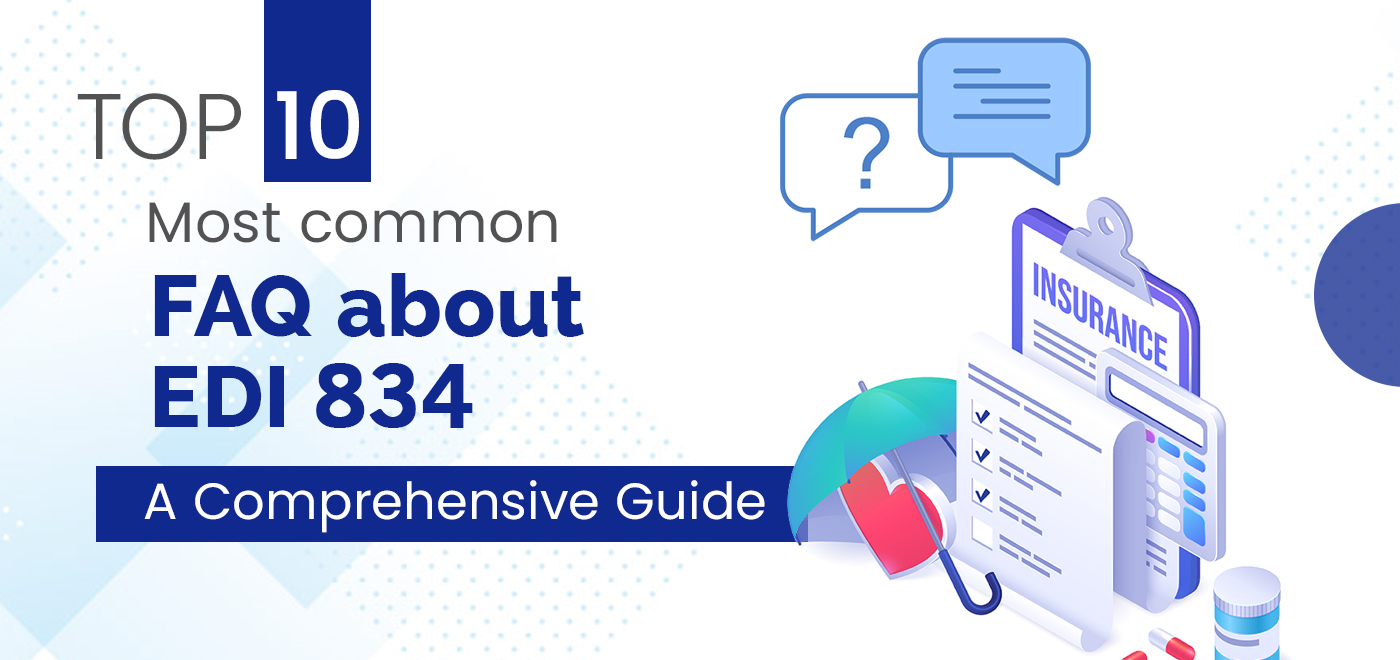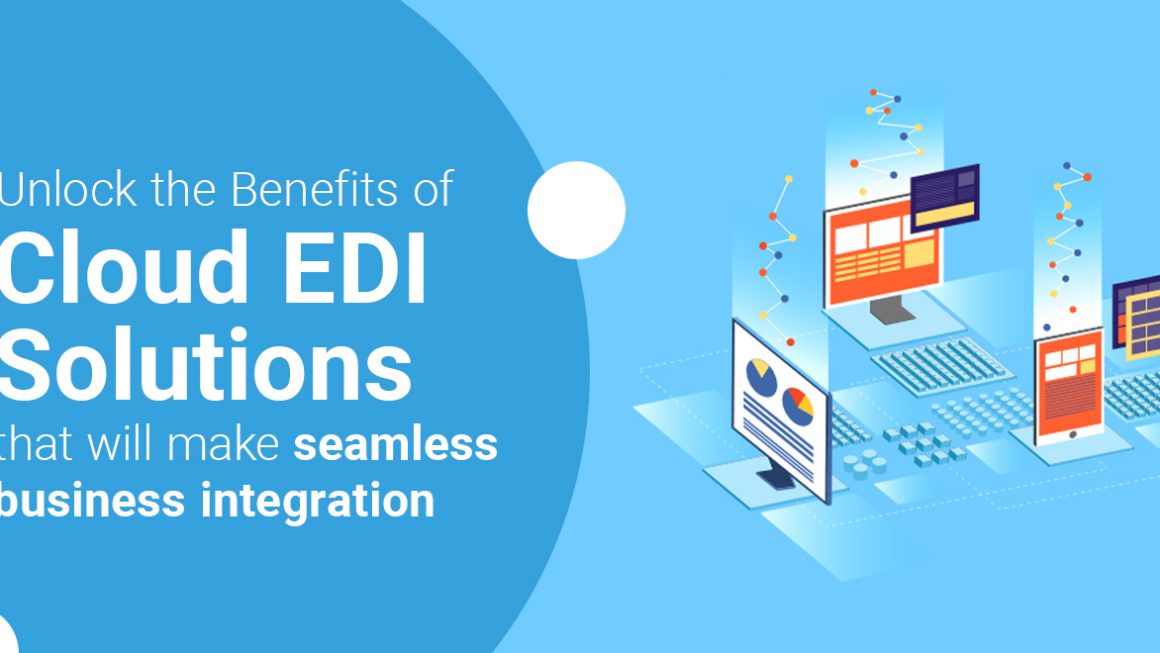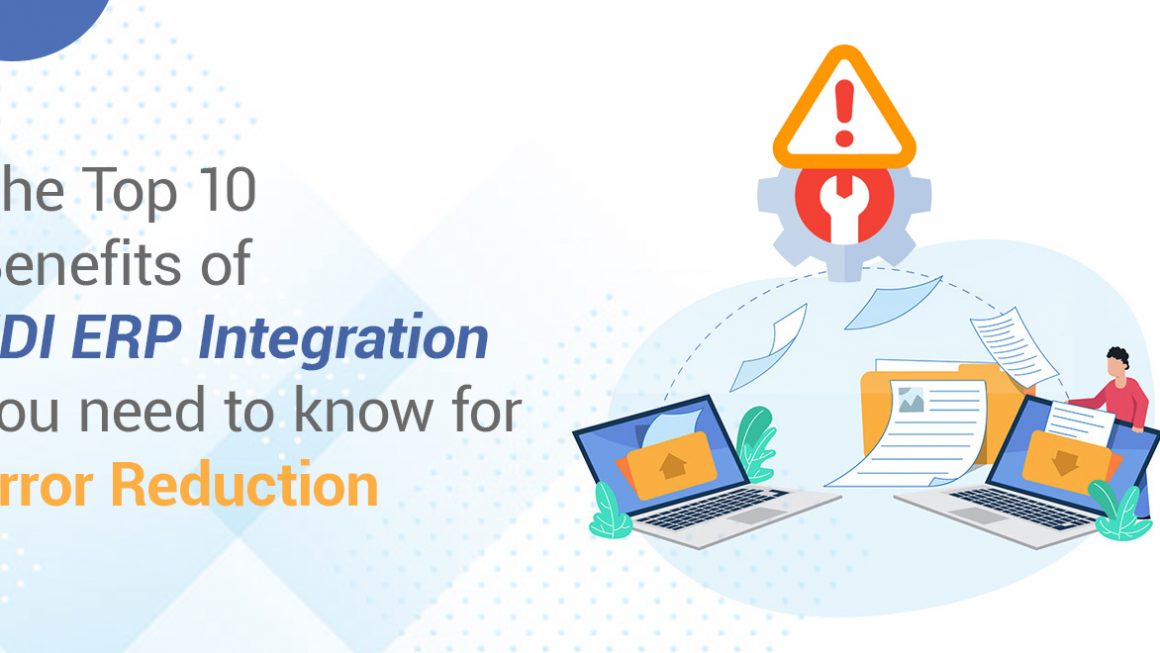A private health insurance exchange functions much like a store, from which customers can select one of several available policies. But that’s not the point at all! The registration files, the member maintenance files, the plan files, the billing files, and the rating files are just some of the things that go on behind the scenes. Because of how frequently it is utilized, Electronic Data Interchange (EDI) is an essential component of the process of data exchange in the healthcare industry but there are several common EDI 834 FAQs occur. If a company understands how EDI 834 deals are transacted, it will be able to optimize its procedures and improve its communication with its partners and customers.
Transactions using the EDI 834 standard are particularly essential since they make it simpler to provide information regarding registration and maintenance. The payer, the sponsor, and the members who are giving benefits items are all described in this section in greater depth. To manage employee benefits, EDI 834 transactions are utilized by individuals who work for or are affiliated with insurance companies, the government, unions, and corporations.
The benefits of EDI 834 are vast, including increased accuracy, efficiency, compliance with standards, and cost savings. For healthcare organizations in the EDI Service Providers in USA, a variety of EDI service providers offer EDI solutions to meet these needs. Some even choose to outsource their EDI processes to specialists in the field to benefit from cost-effective and reliable services. This approach allows healthcare organizations to focus on delivering care while leaving the intricacies of data management to experts in the field.
This blog will discuss the evolution of EDI 834 transactions, common EDI 834 FAQs as well as the typical procedure for sending enrollment data via ASC and HIPAA 834, which is the format for the Benefits Enrollment and Maintenance File. Whether you work in the healthcare industry, manage benefits, or are simply interested in the topic, this book will provide you with helpful information and ideas on 834 EDI transactions.
What is EDI 834?
In the 1990s, as part of a larger attempt to improve the administration of healthcare through the use of electronic data exchange (EDI), the creation of EDI 834 files took place. Because the transactions were being done on paper, the system was moving at an unacceptably slow pace; hence, the federal government and business groups collaborated to establish EDI principles. The 834 EDI transaction set was developed so that information regarding the electronic transmission of payment data for health insurance claims may be accomplished. The goal was to reduce expenses and errors as much as possible, and one way to do this was to automate an essential but time-consuming management function.
1998 marked the year that the Health Care Administrative Simplification Compliance Act gave its official approval to the EDI 834 standard. The HIPAA laws were eventually amended to include it. Since that time, the transition to EDI systems by many large health insurers and providers has resulted in a significant increase in the number of 834 files that have been used. The vast majority of payments for health insurance claims are processed utilizing 834 files in today’s modern world. When compared to the traditional ways of payment based on paper, this one is far more expedient and economical for both insurance and providers.
What does it imply for a file to have an EDI 834 transaction set?
A data set regarding the payment of claims for medical insurance The EDI 834 file format is utilized to transmit data in an electronic format between health care providers and insurance companies. The EDI 834 transaction set contains information that provides specifics regarding how insurance companies pay providers for claims. It includes details on the patient, the claim number, the total amount that will be paid out, any adjustments that will be made, and the information regarding the remittance for each claim. EDI 834 files are used by providers to ensure that the payments are recorded accurately in their respective financial systems. The EDI 834 files enable the process of recording payments by providers simpler and more efficient. When 834 Electronic Data Interchange (EDI) files are utilized instead of paper checks and benefit descriptions, insurance companies and healthcare providers can each realize cost savings in their administrative operations.
The Most Common EDI 834 FAQs
What Is EDI 834?
Electronic Data Interchange (EDI) 834, often referred to as the Benefits Enrollment and Maintenance document. It is a standardized electronic format used for transmitting essential data related to healthcare plan enrollments. These EDI 834 files contain a comprehensive set of information, including details about individuals’ enrollment in health benefit plans, changes to that enrollment, and terminations, where applicable.
EDI 834 services encompass the complete set of procedures and technologies involved in the generation, exchange, and processing of these files. They play a vital role in streamlining the management of healthcare member data. It ensures that stakeholders communicate accurate and up-to-date information.
EDI 834 file itself serves as the carrier of this information. It includes critical data such as member demographic information (names, addresses, dates of birth), specifics about the health plan and coverage options, employment-related data, and any pertinent termination information. This data can be substantial, and therefore, it’s crucial to have standardized methods for organizing and transmitting it.
EDI solution providers are instrumental in ensuring the smooth operation of EDI 834 transactions. These companies offer a range of services, from the creation and validation of these files to their secure transmission. They play a pivotal role in facilitating communication between health plans, employers, and government agencies, helping to maintain accurate records for enrolled members. Let’s discuss about most common EDI 834 FAQs
Why Is EDI 834 Important?
One cannot overstate the importance of EDI 834 in the healthcare industry. Its significance arises from its ability to automate and optimize the enrollment process, reducing the scope for errors and inefficiencies. By facilitating the real-time exchange of information about member enrollments, changes, and terminations. It ensures that health plans, employers, and government agencies are all operating with the most up-to-date data.
Healthcare organizations can rely on EDI-managed service providers to oversee the technical aspects of creating and managing these files. These EDI-managed services allow healthcare entities to focus on their core functions while experts handle the complex tasks related to data exchange. The result is improved accuracy and efficiency in managing member information.
EDI 834 files are essential for maintaining data accuracy. In a healthcare landscape that’s continually evolving, having accurate historical data is vital. These files can be used for retroactive changes, ensuring that records are kept up to date, even if there are changes after the initial enrollment.
What Information Is Included in an EDI 834 File?
Electronic Data Interchange (EDI) 834 files are pivotal in the healthcare industry, serving as the standardized means for transmitting data related to healthcare benefit enrollments and maintenance. These files contain a wealth of information, crucial for the efficient management of member data. Let’s delve into the specifics of what typically includes an EDI 834 file.
- Member Demographic Data: One of the primary components of an EDI 834 file is member demographic information. This includes data such as the member’s name, address, date of birth, gender, and contact details. Accurate demographic information is essential for identifying and communicating with members effectively.
- Plan Information: The EDI 834 file provides details about the specific health plan to which the member is enrolling. This can encompass the type of coverage, coverage options, and effective dates. his information verifies that we correctly enrolled the member in the intended plan.
- Employment Details: It also includes information related to the member’s employment or organization. This is crucial, particularly in cases where employers sponsor health plans for their employees. Employment details help establish the relationship between the member and their workplace.
- Termination Information: In scenarios where you need to terminate or modify a member’s coverage, the EDI 834 file accommodates termination information. This may include effective termination dates and reasons for the termination, providing a clear record of changes in a member’s status.
EDI 834 services are instrumental in assembling and organizing this information into a structured, standardized format. They play a pivotal role in ensuring that the data within these files is accurate, up-to-date, and compliant with industry standards. This is essential for the smooth operation of healthcare benefit plans and accurate member record-keeping.
Who Uses EDI 834?
The utility of EDI 834 extends across various stakeholders within the healthcare industry and beyond. These entities rely on EDI service providers to facilitate the exchange of information in the form of EDI 834 files. Let’s explore the key users of EDI 834:
Health Plans:
Many Health insurance providers and managed care organizations are among the most prominent users of EDI 834. They employ this standardized format to enroll members in their healthcare plans, make changes to existing enrollments, and manage the termination of coverage.
Employers:
Many employers offer health benefits to their employees. EDI 834 enables them to communicate data about their workforce’s enrollment and changes in health coverage to the respective health plans. This simplifies the management of employee benefits.
Government Agencies:
Government entities, including Medicare and Medicaid, use EDI 834 to facilitate the enrollment and management of members in government-sponsored healthcare programs. This ensures that eligible individuals receive the appropriate benefits.
Third-Party Administrators (TPAs):
TPAs often handle various administrative functions on behalf of self-insured employers. EDI 834 allows them to efficiently manage the enrollment and maintenance of members under these self-insured plans.
EDI Service Providers in EDI Service Providers in USA:
Companies specializing in EDI services are pivotal in this ecosystem. They offer the technology and expertise required to generate, validate, and transmit EDI 834 files. EDI companies in USA play a crucial role in ensuring that healthcare stakeholders comply with industry standards and regulations.
EDI Managed Service Providers:
These experts oversee the technical aspects of EDI processes. They handle the creation, validation, and secure transmission of EDI 834 files. This service is beneficial for healthcare organizations looking to optimize their data exchange processes.
EDI Outsourcing Providers:
Many healthcare organizations choose to outsource their EDI processes to specialized providers. This allows them to focus on their core functions while experts manage the intricacies of data management. It is a cost-effective and efficient approach to EDI implementation.
How Does EDI 834 Improve Efficiency?
Electronic Data Interchange (EDI) 834 is a transformative technology in the healthcare industry, streamlining the enrollment and maintenance of health plan members. Let’s explore how EDI 834 significantly enhances efficiency for all stakeholders involved in healthcare data management.
Automation:
At the core of how EDI 834 improves efficiency is automation. Manual data entry processes are time-consuming and prone to errors. EDI 834 minimizes or eliminates the need for manual entry. Structured data exchange electronically reduces the risk of transcription errors and saves time.
Real-Time Updates:
EDI 834 facilitates the real-time exchange of information. When a member’s enrollment status changes, such as when they switch plans or terminate coverage. All relevant parties receive this information instantly. This real-time aspect ensures that everyone has access to the most current and accurate information. It reduces the likelihood of outdated data causing issues or confusion.
Reduction of Administrative Overhead:
For healthcare organizations, managing paper-based or manual processes for enrollment and maintenance can be labor-intensive. EDI 834 streamlines these processes, reducing administrative overhead. This results in cost savings and allows staff to focus on more strategic tasks rather than routine data entry and processing.
Data Accuracy:
Accuracy is paramount in healthcare data management. Errors in member enrollment can lead to costly consequences. EDI 834 designs to validate data, ensuring completeness and consistency of information. If the system detects errors, it quickly addresses them, further enhancing data accuracy by generating error reports.
Consistency:
EDI 834 adheres to industry standards, including ANSI X12, ensuring consistency in data format and content. This standardization is vital because it guarantees that all parties involved in healthcare data exchange understand the data’s structure and meaning. This consistency reduces the risk of misinterpretation and errors.
HIPAA Compliance:
Healthcare data is highly sensitive, and protecting it is a legal requirement. EDI 834 transactions are subject to the Health Insurance Portability and Accountability Act (HIPAA), which mandates strict security and privacy measures. EDI 834 ensures compliance with these regulations, enhancing the security and privacy of healthcare information.
Cost Savings:
While there may be initial implementation costs, EDI 834 ultimately leads to cost savings. It reduces the need for extensive manual data entry, lowers administrative costs, and minimizes the risk of costly errors. Hence saves on the expenses associated with paper-based processes.
Speed of Processing:
EDI 834 processes are faster than traditional paper-based methods. The electronic exchange of data occurs in seconds or minutes, compared to the potentially lengthy delays involved in manual data entry and paperwork handling. This speed is particularly beneficial in situations requiring urgent updates to member information.
Enhanced Member Experience:
An efficient enrollment process directly benefits the members themselves. They experience fewer delays and inaccuracies in their coverage, leading to improved satisfaction and trust in the healthcare system.
What Are the Industry Standards for EDI 834?
EDI 834 serves as the linchpin in the management of healthcare member data. Its users span health plans, employers, government agencies, and third-party administrators. Top EDI providers, particularly those in the EDI Service Providers in USA, play a vital role in ensuring the accuracy and efficiency of data exchange. EDI outsourcing is the best option take by many healthcare organizations to streamline their operations and ensure compliance with industry standards.
The use of industry standards is critical in ensuring that data exchanged via EDI 834 is consistent, interpretable, and secure. The following are key industry standards that is associate with EDI 834:
ANSI X12 Standards:
EDI 834 transactions adhere to the American National Standards Institute (ANSI) X12 standards. These standards provide a common language for the electronic exchange of business documents, including healthcare-related transactions. All parties involved ensure they structure EDI 834 data consistently and can seamlessly interpret it, following ANSI X12 standards.
HIPAA Regulations:
The Health Insurance Portability and Accountability Act (HIPAA) sets the regulatory framework for healthcare data exchange in the United States. EDI 834 transactions must comply with HIPAA regulations to safeguard the privacy and security of electronic health information. HIPAA establishes strict guidelines for the handling of healthcare data, ensuring the protection of sensitive patient information.
5010 and 5010A1 Versions:
EDI 834 files often categorize versions, commonly using the 5010 and 5010A1 versions. These versions, part of the ANSI X12 standards, include specific data elements and structures that require adherence. Staying up to date with these versions is essential to maintain compliance and interoperability.
NCPDP:
The National Council for Prescription Drug Programs (NCPDP) is another organization that plays a role in healthcare data standards. While not specific to EDI 834, it focuses on pharmacy-related data exchange. However, interoperability with NCPDP standards may be relevant in situations where prescription data intersects with healthcare enrollment information.
Is EDI 834 Secure?
Yes, EDI 834 transactions are highly secure. Typically, they transmit these files over secure communication channels, often utilizing encryption to protect the sensitive information contained in them. Moreover, HIPAA (Health Insurance Portability and Accountability Act) regulations require the protection of electronic health information, further ensuring data security.
How Are Errors in EDI 834 Transactions Handled?
EDI 834 transactions are subject to data validation and error-checking processes. If the receiving party detects errors, they will send an error report (an EDI 999 response). The originator of the file can then make necessary corrections and resubmit the transaction for processing.
Can EDI 834 Be Used for Retroactive Changes?
A member can use EDI 834 to communicate enrollment information and convey retroactive changes. It allows for updates to previous transactions, ensuring that historical data is accurate and complete. Retroactive changes can include updates to coverage effective dates, termination dates, and other relevant information.
What Are the Key Benefits of Using EDI 834?
The adoption of EDI 834 offers several benefits to the healthcare industry, including:
- Accuracy: EDI 834 reduces data entry errors, ensuring that members’ information is correct and up to date.
- Efficiency: It streamlines the enrollment process, reducing administrative burdens and processing time.
- Compliance: HIPAA regulations govern EDI 834 transactions, ensuring secure handling of sensitive healthcare data and compliance with legal requirements.
- Cost Savings: By automating manual processes, EDI 834 reduces administrative costs and the need for physical paperwork.
- Real-Time Updates: EDI 834 provides real-time information. Allowing all relevant parties to access the latest data on member enrollments and changes.
Conclusion
Electronic Data Interchange (EDI) 834 is a fundamental tool in the healthcare industry, streamlining the enrollment and maintenance of health plan members. Understanding its significance and functionality is vital for all stakeholders, from health plans and employers to government agencies. By addressing these common EDI 834 FAQs, we hope to provide clarity and insight into this essential component of modern healthcare management. As technology continues to evolve, EDI 834 remains a critical element in the quest for more efficient, accurate, and secure healthcare data exchange.



